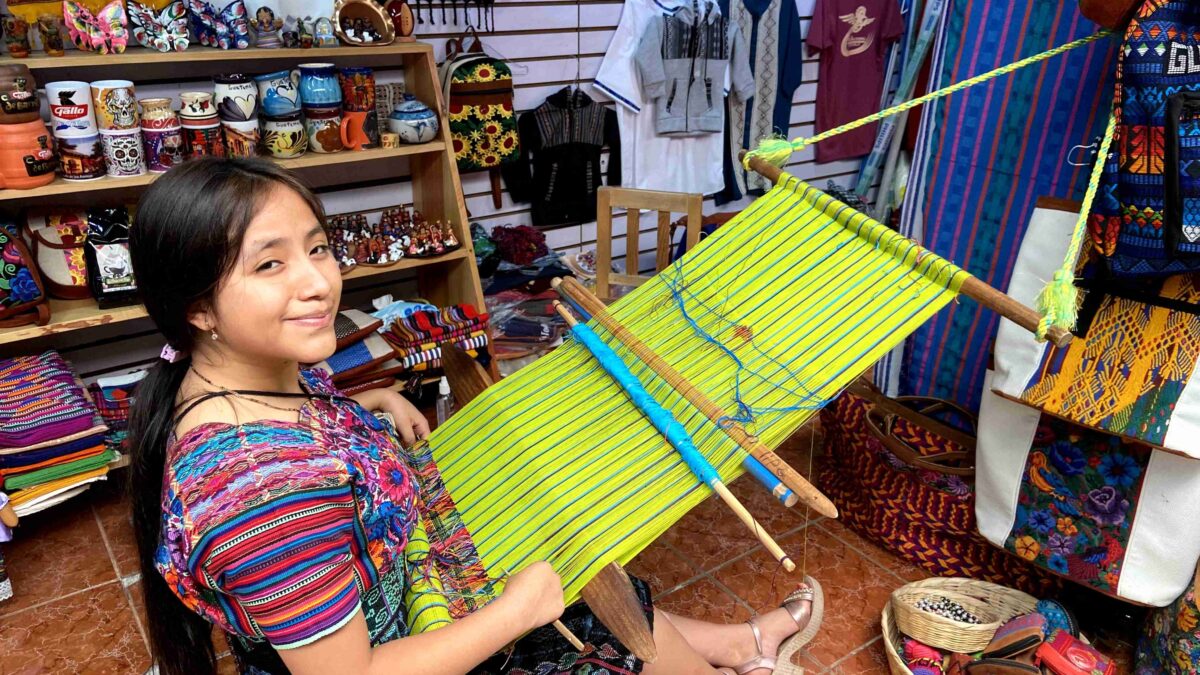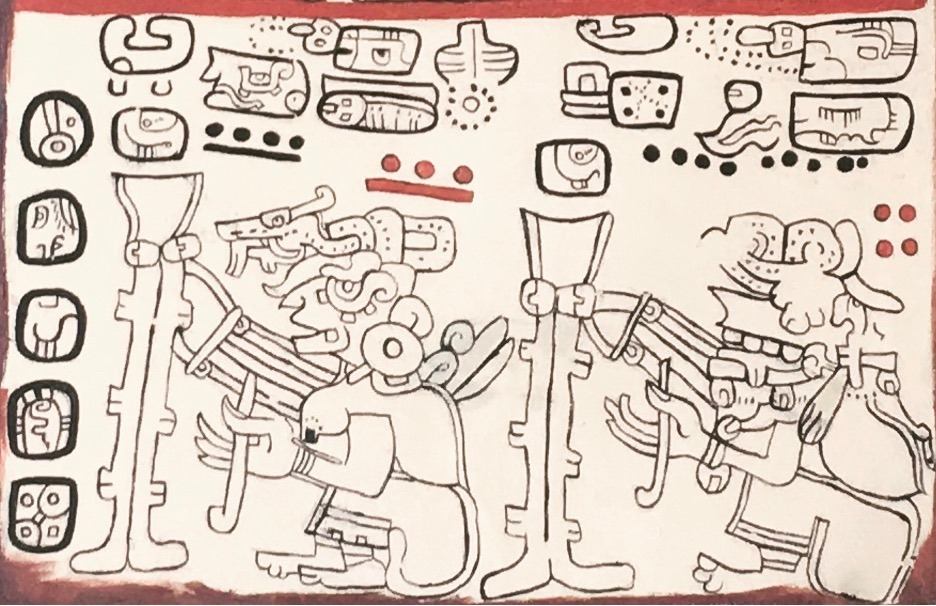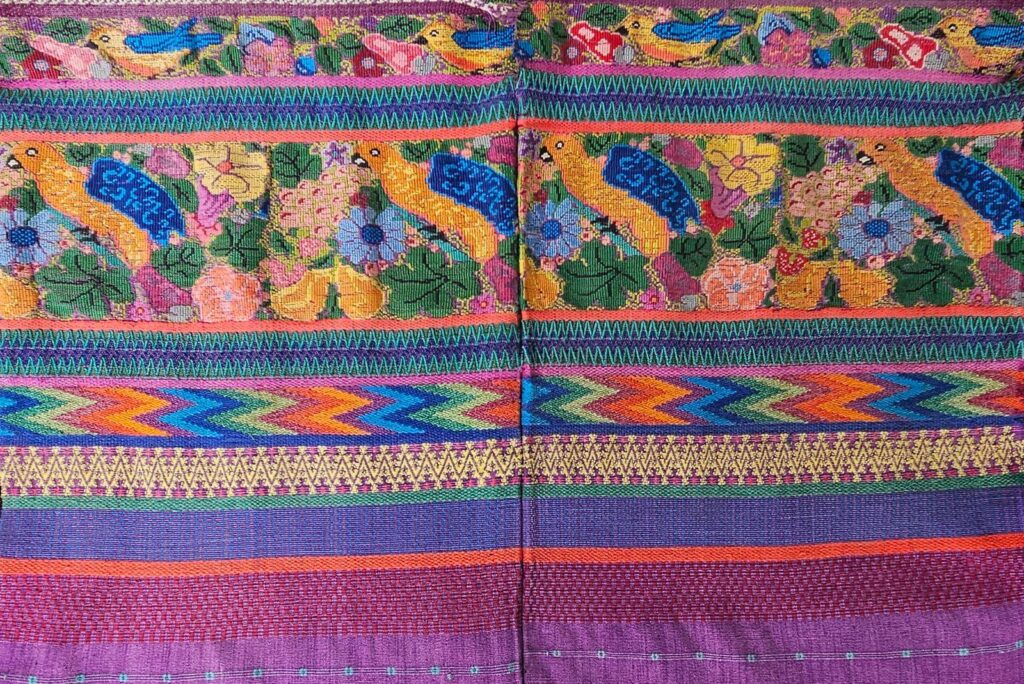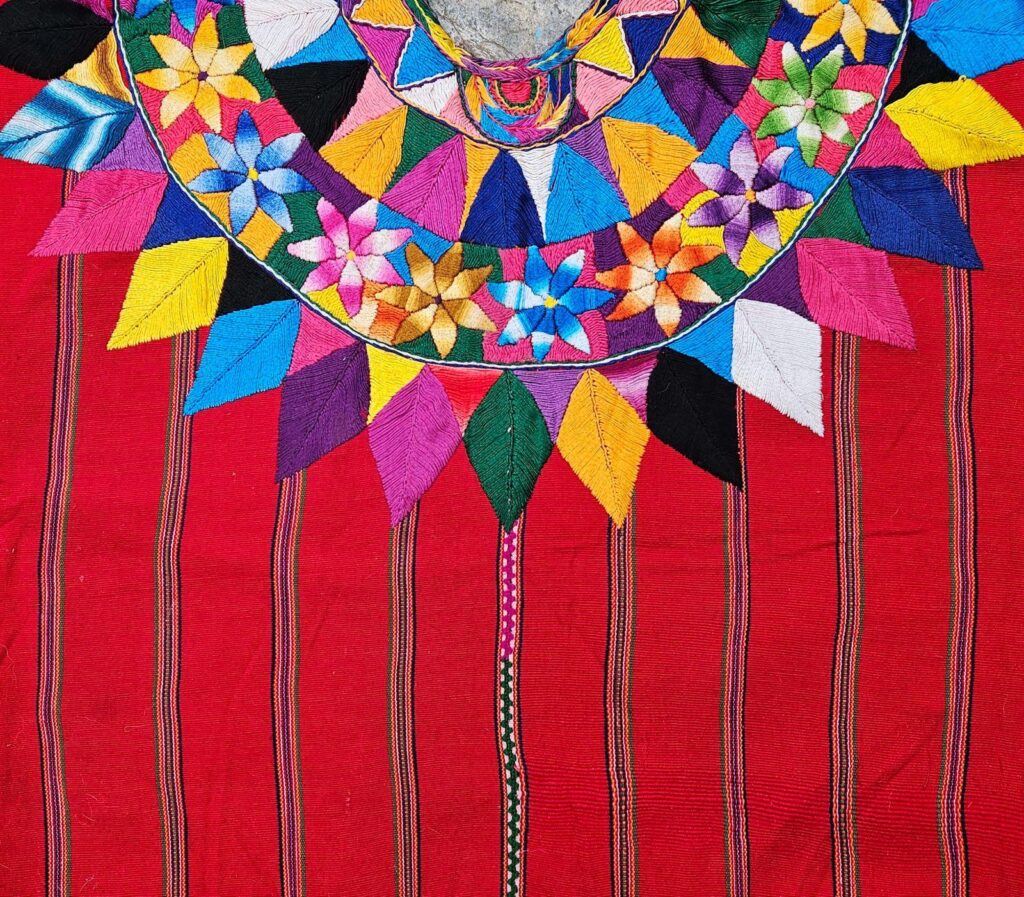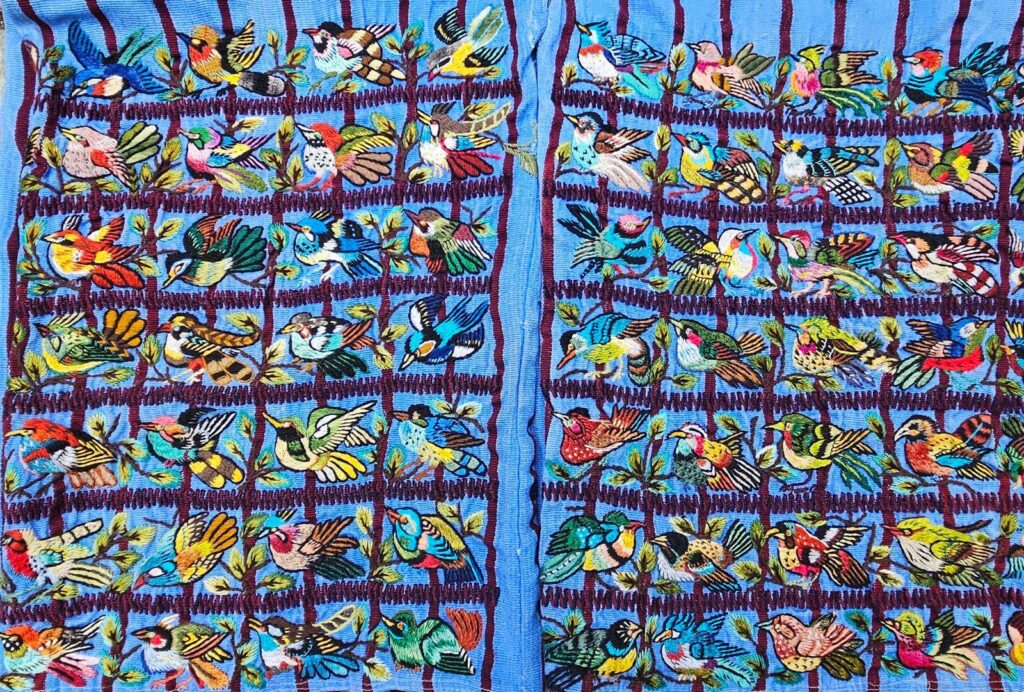Huipiles of Guatemala
Highly skilled weavers produce traditional Maya clothing including huipiles is an artisanal tradition that dates back thousands of years. Most casual visitors to Antigua will already be familiar with the sights of numerous colorful clothing designs seen everywhere on the streets. If you have visited the Mercado de Artesanias to the west of town, you may also have caught a glimpse of a woman using the backstrap loom to produce new designs.
What is a backstrap loom?
The backstrap loom is a unique portable weaving device which independently arose in many ancient cultures around the world and continues to be used to the present day by Maya weavers and others. The loom can be set up anywhere by tying off to a tree or pole, and the tension is provided by the weaver’s own body weight. In Guatemala, the backstrap loom predates the arrival of Spanish invaders. The Madrid codex, on of the few surviving Maya books from before the invasion, shows a drawing of Ixchel, the goddess of midwifery, using a backstrap loom.
The backstrap loom is used to produce swaths of fabric up to about 2 feet in width. These can then be stitched together to make larger garments. For example, the women’s blouse (huipil in Spanish, po’t in Kaqchikel) worn in most Maya towns is typically made by sewing together two piece of fabric from a backstrap loom with a opening fashioned into a neckline. A women’s belt (faja in Spanish, pas in Kaqchikel) is similarly produced on the backstrap loom, but with a narrower weaving just a few inches wide. Traditional skirts (faja in Spanish, uq in Kaqchikel), on the other hand are typically made with larger swaths of cloth that are produced on a treadle loom. Backstrap weavers are almost always women, whereas both men and women commonly operate treadle looms.
VIDEO
One amazing feature of traditional woven designs is that each Maya town tends to have its own repertoire of colors, motifs, and techniques. This often makes it easy to tell from what town a particular textile originates. Although, traditionally, individuals would wear textiles from their own town many also take pride in wearing diverse designs from different locations.
Examples of huipiles of Guatemala
Our first example of huipiles of Guatemala is a huipil/po’t from San Antonio Aguas Calientes (in Kaqchikel, Meq’ën Ya’), located just a few minutes outside Antigua. Weavers from San Antonio are famous for their extremely fine brocade work, where colors and designs are woven into the basic fabric of the textile using additional added threads. These designs are based on elaborate counted patterns, called marcadores. In this case, we can see two different bird-themed marcadores. One additional amazing feature of San Antonio weavers is that their brocade work is usually double sided, meaning the textile is reversible. For these reason, these pieces are expensive, durable, and highly valued.
Our next example is a beautiful huipil/po’t from Patzún (Pa Su’m in Kaqchikel), a large agricultural community in the department of Chimaltenango. Huipiles from Patzún tend to feature simple swatches of predominantly red cloth. However, they almost always have ellaborately embroidered as seen in this example. Embroidery is where designs are added with a needle and thread on top of the finished weaving. This is different from the brocade work in the example from San Antonio Aguas Calientes, where the design is worked in as part of the weaving itself.
Our next example of huipiles of Guatemala is a po’t from Sololá (Kaqchikel Tz’olöj Ya’), located close to the popular tourist town of Panajachel, and one of the largest commercial centers in central Guatemala. Huipiles from Sololá are very unique because the incorporate elaborate tie-die patterns into the warp (up and down long-wise threads) of the weaving. Here these can be seen as elaborate floral and animal designs, including quetzal birds in pink and green. These are then machine over-sewn with additional colorful floral and star-shaped designs both over the main panels and around the neckline. Tie-die patterns are extremely common in skirts (corte, uq) from all over Guatemala, but they are more unusual in the huipil.
Our final example is a pair of short men’s trouser’s (wex’aj) from the town of Santiago Atitlán (Tz’ikin Jaay in Tz’utujil) located on the shores of Lake Atitlán. Santiago Atitlán is especially famous for elaborately detailed embroidery work, often with panels of small figures in rows on the legs of pants or the front and back panels of huipiles. Here two simple panel of fabric from a backstrap loom in blue and red are sewn together to make the pants legs, and then these are extensively embroidered with unique bird designs.
Where can you learn and see more?
- Visit Marisol and her daughter Andrea (See above video) who lovingly create beautiful huipiles at the Antigua Artisan Market shop No. 105 (Located at the end of 4a Calle Poniente).
- Nim Po’t is a fantastic textile store in Antigua where you can browse hundreds and hundreds of Maya textiles from all over Guatemala
- The Museo Ixchel del Traje Indigena in Guatemala City is well worth the drive, housing the best museum textile collections in the country

